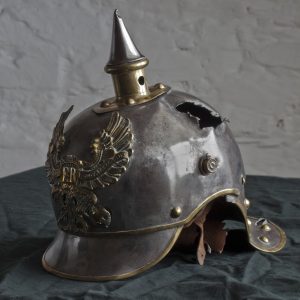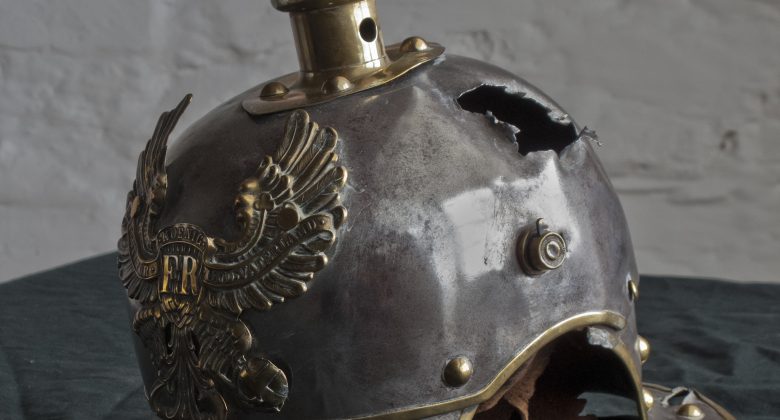Battle of Mons 23rd August 1914
The 1st Battalion of the Duke of Cornwall’s Light Infantry was stationed at The Curagh, Co. Kildare when Britain declared war on Germany on 4th August 1914.
Like most ‘home’ Battalions, it was seriously under strength, requiring 600 reservists to bring it up to the war establishment of 1,017 all ranks. These reservists arrived in Ireland over the next few days, and on 13th August the complete Battalion sailed from Dublin, landing at Le Havre two days later.
The regular British army of that period was superbly trained, well equipped and motivated by a fierce regimental pride. It was however miniscule by European standards. The British expeditionary force that went to war consisted of four infantry divisions and one cavalry division. The German attacking army fielded thirty one divisions in the front line, with an almost inexhaustible reserve available behind as a back up.
The Kaiser had dismissed the effectiveness of the British by his infamous statement, “If that contemptable little army attempts to land in Europe, I will send a policeman to arrest it!” …In the next few weeks he was to rue this grandiose outburst.
The British expeditionary force made its way north to Belgium, to an initial blocking position on the Mons-Conde Canal. It moved by night, and so good was security that the German intelligence staff failed to discover its presence until contact was made at dawn on 22nd August by a patrol of the 4th Royal Irish Dragoon Guards which surprised a German cavalry picquet, putting them to the sword. In contrast, British intelligence was excellent; the twelve aeroplanes of the Royal Flying Corps and the wide ranging cavalry patrols reported back every move of the German advance.
On the evening of 22nd August the 1st Battalion DCLI arrived at the Mons-Conde Canal and were deployed on the left flank forward of the canal itself, guarding one of the bridges over which the cavalry were to be withdrawn. A picquet of three men under Private Sambrook was posted in a ditch beside the main north/south road some two hundred yards ahead of the main position. At about 6.00 am a German cavalry patrol, quite oblivious to the fact that it was just about to bump the main British position, trotted down the road. Sambrook waited until the leading trooper was opposite his position before standing up and shooting the German through the head (the man’s helmet and sword can be seen in the museum). This was the first shot to be fired by British infantry in the Great War and brought up the curtain on the Battle of Mons.
The British army had learnt valuable lessons from its less than auspicious performance in the South African War of 1899 – 1902, particularly the importance of concealment, fieldcraft and marksmanship. They were armed with 1907 pattern Lee-Enfield No1 Mk III Rifle, arguably the finest bolt action riffle ever produced. Every soldier was required to fire twelve aimed shots per minute, though many men could exceed this. German tactics on the other hand were still based on their victorious Franco – German war of 1870 – 1871. The result was that, while the German Infantry attacked in massed ranks, marching forward shoulder to shoulder, the hidden British soldiers could pour rapid rifle fire into the close packed enemy. The Germans suffered catastrophic casualties, many believing that the volume of rifle fire came from machine guns.
By that evening the Germans had failed to secure a footing on the south side of the canal, the French on the right of the British had been forced to withdraw. This left the British flank wide open and their own immediate withdrawal became imperative. There followed perhaps the most famous fighting retreat in British military history – from Mons to Tournan, 240 miles in 14 days; ‘The Retreat from Mons’ …But that is another story!
The British Soldiers, hearing of the Kaiser’s disparaging description of them as “ that contemptible little army”; took the phrase as a badge of honour, henceforth calling themselves “The Old Contemptibles”.


